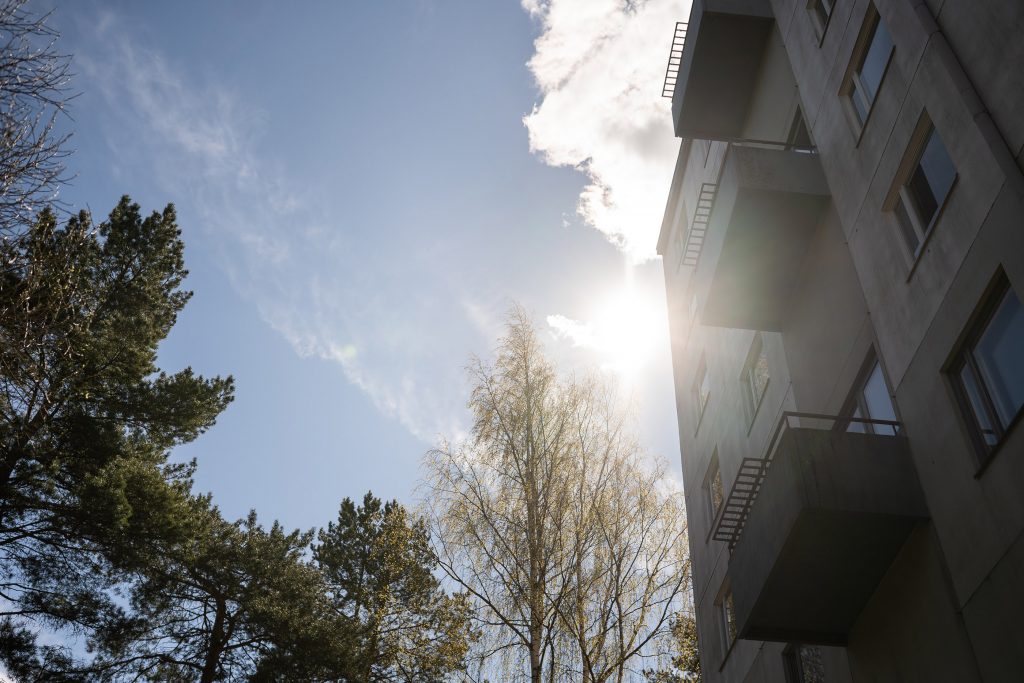Emma Berg
March 2024
I have studied sustainable development and service design and currently work as a service designer in the energy renaissance team at the City of Helsinki’s Building Control Services. Our team has amazing experts who help housing companies in Helsinki improve energy efficiency and switch to renewable energy.
Although ‘renaissance’ is a fine word, it is really not an approachable name for our service and to our customers, which are housing companies. Indeed, the first thing we did with the team was to develop an understandable name for our service: energy advice for housing companies.
When I studied design, I was often involved in the development of service concepts and prototypes. In my current job of developing energy advice for housing companies, I am constantly involved in hands-on work to improve the customer experience and carbon neutral Helsinki. Our service is still young, so it constantly requires practical implementation, which means that we keep refining and implementing new working methods and tools.

Sustainability in energy advice for housing companies
I am lucky because it has been easy to combine service design and sustainability work in my job: from the City’s perspective, the most important goal of our service is to reduce emissions in Helsinki. This can be achieved if we make the customer experience and effectiveness of our service as good as possible and help housing companies succeed in improving their energy efficiency.
The basic activities of service design are very useful for achieving our big common goal.
Energy use and energy prices have complex network effects in housing companies and society. My training in sustainability matters has proved useful in my work when we have started to pay attention to the connections between our service and social justice, including the unequal impacts of energy projects in different regions and housing companies. Indeed, nowadays a major priority in our service is to develop energy advice to combat regional inequality.
Service design provides a new perspective to sustainability work
In my view, service design is a human-centric development method, in which the needs and wishes of users are gathered and discussed in the short term. While service design identifies different players involved in the formation of a service experience, for example, sustainability themes and work always make the lens much wider and usually render the time scale much longer. However, this does not mean that service design methods cannot also be adapted for and used in sustainability work.
For example, if we wanted to develop our combat against climate change or adaptation to its impacts, we could look into what our user experience of our climate is like.
The thing is that I believe it is deteriorating all over the world, and we can’t improve it by simply using a net promoter score (NPS) that asks ‘would you recommend it?’. We could also ask how the ecosystem services our planet provides are changing as a result of the climate crisis. So, in a way, as if by accident, we are involved in designing our planet’s ecosystem services.
Sustainability thinking deepens service design
Sustainability themes can also bring a lot of added value to service design. At least for me personally, it has been very insightful to assess the systemic impacts of our service and develop it to curb regional inequality.
Service design methods are often very human-centric, but in the context of sustainability, we should also ask which people’s perspectives should be considered and for how long.
I think in the end, it would also be in the city residents’ best interests that future generations also have similar opportunities to live on our only planet. We can consider what our stakeholder analysis would look like if we included future generations and other species in it – or a customer path that would continue over three generations.
Services have their impacts
The truth is that each service has its impact on responsibility and sustainability matters, including social, economic and ecological sustainability. However, it is good to remember that social and economic impacts are ultimately secondary to ecological sustainability because without a functioning planet, social and economic matters are entirely impossible.
At best, the City’s services can mitigate regional inequalities, improve residents’ well-being and help solve the climate crisis.
This is why it is important that service designers and providers also understand sustainability issues. I feel it is also natural to promote these things in the public sector. I suppose it is hard to find a better motivator for your work than a better future for all of humanity. I hope I could continue recommending our life on earth to my friends and colleagues in the future as well.
 |
Emma Berg is a service designer who works as an energy expert for housing companies at the City of Helsinki’s Building Control Services and dedicates her spare time to hoeing in the garden of her cottage in Porvoo. |
Photos: Jussi Rekiaro, Emma Berg

